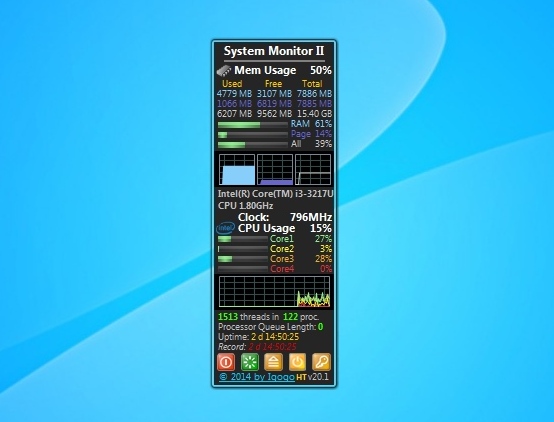

- UNINSTALL SYSTEM MONITOR HOW TO
- UNINSTALL SYSTEM MONITOR INSTALL
- UNINSTALL SYSTEM MONITOR SOFTWARE
- UNINSTALL SYSTEM MONITOR CODE
If gnome-system-monitor is not installed on your compter then the command 'dpkg -L gnome-system-monitor' will give followin error.Īfter system update use the following command to install gnome-system-monitor: This will update the list of newest versions of packages and its dependencies on your system.Īfter downloading the latest package list with the help of above you can run the installation process. Go to extensions tab of gnome-tweaks and enable the “System-Monitor” extension.Ĩ.Above command will download the package lists for Ubuntu 17.04 on your system. sudo apt install gnome-tweaks gnome-tweaksħ. After restarting, you can install gnome-tweaks and enable the extension from there. Restart your system for the changes to take effect. Run the make install command, to install the extension. cd gnome-shell-system-monitor-applet-38/Ĥ.
UNINSTALL SYSTEM MONITOR CODE
Download the extension source code from GitHub using “wget” command. Here, I am going to install it using the source file.ġ. You can also install this extension via browser by going to the gnome-system-extensions page and following the steps provided there. Install this System Monitor Extension on Ubuntu There are many System Monitor extensions available, but I am going to install “gnome-shell-system-monitor-applet” by Mounier Florian ( GitHub username – paradoxxxzero).Īfter installing this extension, you don’t have to open system monitor to find out what program is using up your resources, you can get all that info in gnome-shell status bar. Note: The extension I am using in this post requires GNOME Desktop Environment and GNOME Shell v3.26 or later.

You can go to this option, if you need any help related to system monitor.

You can customize settings of the GNOME system monitor from the preferences tab. The Search for Open Files dialog lists all the files that processes have open. If you click on the system monitor icon (or the burger menu icon in some OS) at the top-right corner of the Gnome system monitor window, then you will get to see some more options: You can also sort the listing based on the above info. It provides you with the following info about the devices:
UNINSTALL SYSTEM MONITOR SOFTWARE
Open software installer and search for GNOME System Monitor.įile system tab provides information about the hard drive(s) on your system. (I am installing it via Ubuntu’s Software Installer.)ġ. You can install Gnome System Monitor graphically via software installer in Linux. First, let’s have a look at the graphical method. You can install system monitor graphically or through command-line.
UNINSTALL SYSTEM MONITOR HOW TO
In this post, I will also show you how to install an extension to System Monitor, so that you don’t have to open task manager to monitor your resources every now and then. Although it comes pre-installed on many popular Linux distros like Ubuntu, CentOS etc., your particular OS version may lack it. It is a simple and elegant task manager that comes pre-installed on systems that have GNOME installed. Linux has many graphical and command-line task managers. Brief: After following this guide to the end, you’ll be able to install, understand and even uninstall Gnome System Monitor on your Linux Distro.


 0 kommentar(er)
0 kommentar(er)
